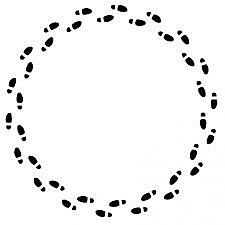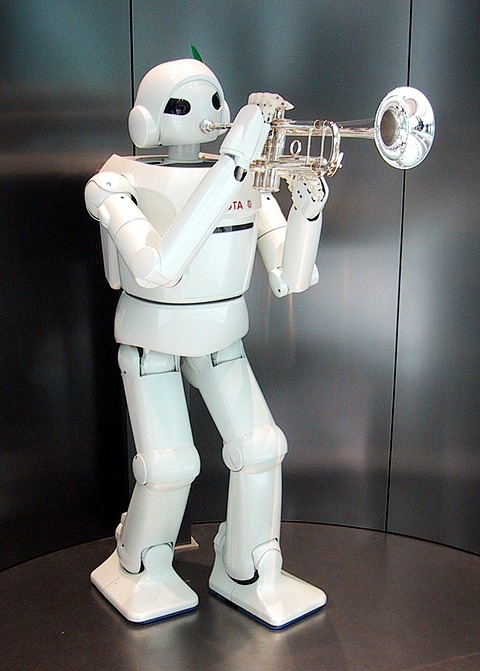
[#3] THE MIND-WORLD CIRCLE: TWO ASPECTS OF REALITY
[LUCID LIVING #3] The Mind-World Circle: Two Aspects of Reality
By Piet Hut
A couple weeks ago, I identified the origins of life with the first information revolution on Earth. But if life had never got beyond the state it was in for the first three billion years of its existence, it would have been a very quiet revolution indeed: there would have been nobody to notice it, and nobody to celebrate it. At that time, well before the Cambrian explosion of diversity, complex multicellular organisms had not yet appeared.
“Celebrating the revolution”
Only very recently, four billion years after the fact, are we humans now ready to throw a party to celebrate the information revolution, having finally recognized the role of information in what happened when the Earth was only half a billion years old, when life appeared. What took so long? Information processing is amazing in itself, and as such extremely useful in that it got life going on Earth. For life to flourish as it has, there was no need to process information about the processing of information.
How did we get there, to the point that we are now finally reading and writing about how reading and writing was invented so very much earlier? How did the circle get closed?

Self-awareness was a first step, something we share in some form with quite a few animals. Language definitely helped a big deal. Depicting events in the world in abstract ways, like it was done in cave paintings forty thousand years ago, is yet another huge step. Development of complex societies, six thousand years ago, sped up cultural evolution and technology. Finally, through a curious combination of circumstances, not very well understood, science in its modern form originated four hundred years ago in western Europe, and took off. As a result, we can now confidently talk about what happened four billion years ago.
To sum up: without life, no role for information; without minds, no recognition of that role. The relationship between the world, in which life appeared, and minds within which we can recognize a world, is the greatest mystery, as yet unsolved by science. We have not even the slightest clue as to how and where to start.
The reason is simple: there is no natural starting point! We cannot talk about mind or world in isolation. Whenever we talk about the world, we use our mind in doing so. And whenever we talk about our mind, we find ourselves already in a world. We always are confronted with a mind-world circle, a circular relationship where either one of the components is defined in terms that already implies the other.
In my previous post I introduced a much simpler, but still fundamental, example of such a circle: the way in which physics defines force in terms of mass, and mass in terms of force. And I argued that, far from being a vicious circle, it is an example of a necessary circularity, given the fact that both terms are co-dependent, and therefore need to be introduced together.

The same pattern occurs everywhere, not only in natural science, but also in social science and the humanities. An example in the latter category is the use of what is called a hermeneutic circle, a way of interpreting a text when you are not quite sure what the meaning is of the basic concepts that appear in the text. Starting from a preliminary, perhaps intuitive, understanding of the main concepts used, the text can be clarified to some extent. This clarification in turn can help to highlight the meaning of each main concept. After traversing the hermeneutic circle a few times, it is possible, with care, experience, and consultation with one's peers, to come close to an agreed-upon interpretation of the text.
In fact, all research in natural science, from physics to biology, has this hermeneutic nature. Newtonian mechanics grew from a more than century long evolution of ideas. Even after Copernicus put the Sun in the center, he continued to use epicycles to describe the orbits of the planets. Galileo, for all the progress he had made, held on to the use of circles, refusing to accept Kepler's suggestion that planets move in ellipses. And it took decades to sort out the confusion as to what counts as the "amount of motion", the difference between momentum and kinetic energy (linear and quadratic in terms of velocity, respectively).
The short list of Newton's laws of mechanics and gravity, implying elliptic motion as well as the velocity dependence of various quantities, gives us a neat set of clean mathematical equations. But that list belies the long and torturous, and often seemingly circular, meandering path that lead to such a neat outcome. High school kids, dutifully learning those laws, often have no idea of the long struggles, undertaken by some of the best minds at the time, to finally reach those conclusions.

And now, in our own time, we are awash in suggestions toward solving the mind-body problem, by trying to shed light on the nature of consciousness or awareness. At this still early stage there is not much point in taking any particular suggestion very seriously. What is most important, is the ongoing hermeneutic dialogue, beyond the pet convictions held by particular groups in particular combinations of disciplines.
All the latest news about discoveries in neuroscience, artificial intelligence, and robotics is truly fascinating. We live in an amazing time, in which the mind-world circle is now being approached in ways that previous generations could not dream of. But we should not forget that it is likely to take another century, if not more, to come to a clear understanding of what all these advances may lead to, when seen in a coherent picture.
In the meantime, it is a good idea to step back from time to time, to ask ourselves what may be holding us back, toward establishing a coherent picture. Part of it is our current lack of more detailed observational and experimental data. But in addition, we are likely to hold tacit assumptions that are forming obstacles toward deeper understanding. In next week's post I will explore some possible obstacles, in the "Y" spirit of YHouse, by asking "Y do we hold the beliefs we do"?
Piet Hut is President of YHouse (where this blog is hosted), Professor of Astrophysics and Head of the Program in Interdisciplinary Studies at the Institute for Advanced Study in Princeton, and a Principal Investigator and Councilor of the Earth-Life Science Institute in the Tokyo Institute of Technology.